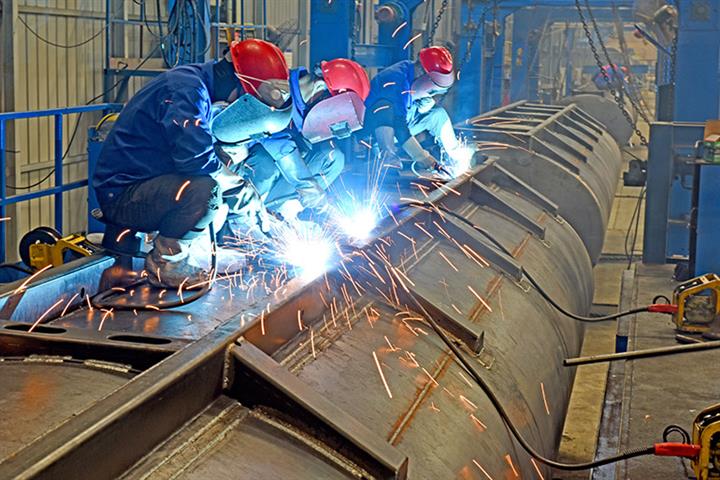 More Support Policies Needed After China’s First-Quarter GDP Rebounds
More Support Policies Needed After China’s First-Quarter GDP Rebounds(Yicai Global) April 19 -- China’s economic growth rebounded in the first quarter after a sluggish final quarter last year, thanks to the effect of counter-cyclical growth policies. But these support measures will need to be continued as the damage to the economy from the recent Covid-19 outbreak has yet to fully emerge.
China’s gross domestic product grew 4.8 percent in the first quarter from a year earlier, up from 4 percent in the previous quarter, according to data released yesterday by the National Bureau of Statistics. Secondary industry was the main force bolstering GDP, with year-on-year growth of 5.8 percent, up 3.3 percentage points from the prior quarter. Tertiary industry grew 4 percent, down 0.6 point, mainly due to the impact on the service industry of the recent wave of Covid-19, especially in Shanghai and Shenzhen.
Industrial added value climbed 5 percent in March from a year before, which was much lower than the high of 12.8 percent in February, and closer to the normal range. The growth in the added value of private enterprises reached 6 percent after accelerating for three straight months, mainly due to China’s move to lift energy consumption restrictions and the implementation of tax and fee reduction policies to support small and medium-sized enterprises.
In the first three months, fixed-asset investment rose 9.3 percent year on year, down 2.9 points from the growth in the first two months but still much higher than in 2019 before the pandemic began. Cumulative growth in infrastructure investment reached 8.5 percent in the first three months, up 0.4 point from that in January and February. In the context of an economic slowdown caused by Covid-19, infrastructure becomes more important for stabilizing growth, and the investment may continue to accelerate.
Total retail sales of consumer goods fell 3.5 percent in March on a yearly basis, versus a 6.7 percent rise in the period from January to February. Consumption in March was much lower than expected and showed a worsening situation, mainly due to Covid restrictions. Strict home isolation measures in some cities led to a cliff-like drop in offline spending. Expectations for growth in residents’ income also weakened, putting another dampener on consumption.
The real estate sector showed a further downward trend. The area of land with newly started construction in the first three months dropped 17.5 percent from a year earlier. Sales area fell 13.8 percent year on year and completed investment slid 0.7 percent. The three numbers have all declined for 12 straight months and are close to the lowest point during the 2020 pandemic.
Covid-19 has flared up in many areas of China since the beginning of the year. Meanwhile, the Russia-Ukraine conflict has resulted in surging international commodity prices, posing new difficulties for economic growth. But the Chinese government implemented measures to stabilize growth in advance, including issuing local debt quotas and starting large infrastructure projects at the beginning of the year, which effectively hedged against the downward pressure on the economy.
However, the impact of the current wave of Covid-19 has not yet fully emerged, and the downward trend in consumption and the real estate market will eventually be transmitted to the production side. Meanwhile, the implementation of measures to stabilize growth ahead of schedule means that the loose policy for the second half of the year has been overdrawn. Against this background, the measures to stabilize growth still need to be further enhanced to reverse the economic downturn.
(The author is chief economist of China Renaissance.)
Editors: Dou Shicong, Tom Litting